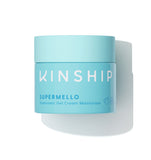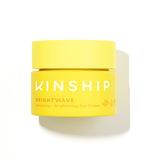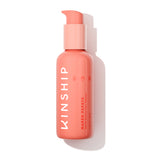One of the reasons that your skin can become red is because of dry skin.
Symptoms of dry skin include scaly patches, cracked skin, and a feeling of tightness that is more prominent after you have been in the water (whether swimming or bathing).
As such, if your skin is red and dry, it is important to know why you have dry skin and how you can treat it. To do this, you will need to learn about skin health and how it affects your skin’s moisture.
Understanding Dry Skin
Dry skin is characterized by a rough texture that can cause itchy patches or a different color than your normal skin tone in the affected area.
There are a number of factors that cause skin redness and dryness, such as the ones listed below.
- The older we get, the thinner our skin becomes because our oil glands no longer produce as much moisture.
- Dry air (such as in arid climates or extremely cold weather) can strip your skin of hydration. Heat sources like wood stoves and central heating can also lower the humidity in the room.
- Taking long, hot showers or baths can also strip away the skin's oils, leaving it dry.
- Some soaps and detergents can be bad for your skin, as their harsh chemicals can damage your skin's natural defensive barrier.
- Some people have severe dry skin because of genetics. Health conditions that can cause dry skin are allergies, eczema, diabetes, and kidney disease.
Types of Dry Skin
Dry skin can come in different forms, but below are some common types of dry skin conditions.
- Xerosis: Xerosis, otherwise known as severely dry skin, is very common, especially in older adults. This condition is characterized by the skin's inability to retain sufficient moisture, leading to symptoms such as tightness, itching, flaking, and sometimes even cracking. It can be caused by cold and dry weather, harsh cleansers, and medical conditions like psoriasis.
- Ichthyosis: Ichthyosis is a group of genetic skin disorders recognizable by the buildup of dry, thickened skin that resembles fish scales. There is no cure for them, but symptoms can be managed through regular exfoliation, moisturization, and sometimes the use of topical or systemic retinoids.
- Dermatitis: Dermatitis is the inflammation of the skin, causing red, swelling, and itchy skin that can sometimes result in blisters, open sores, and lesions. Examples of this condition are atopic dermatitis, contact dermatitis, and seborrheic dermatitis.
Recommended Products
What is the Connection Between Dry Skin and Redness?
If you ever find yourself wondering, "does dry skin cause redness?" the answer is that dry skin and redness are interconnected.
If the skin is dry, the skin barrier becomes compromised, leading to increased sensitivity and susceptibility to irritation.
Because of that, environmental stressors like allergens and harsh weather conditions can enter the skin more easily — which, in turn, triggers more inflammation and redness as the skin reacts to them.
Aside from external factors, dry skin is also more prone to microscopic cracks and fissures, which can further worsen irritation and redness.
Fortunately, this interconnectedness means that addressing dryness will also improve redness issues.
As such, restoring hydration levels can help reinforce the skin barrier and control redness.
Some ingredients that can help lock in moisture are petroleum jelly and mineral oils. Meanwhile, glycerin can help attract moisture, reducing redness from dry skin.
Common Triggers for Dry Skin and Redness
Several triggers can cause you to develop dry and red skin. Below are some that you should be aware of.
- Weather Changes - When it is cold and dry outside, such as during the winter season or in arid climates, you might experience flaky skin due to the lack of moisture.
- Harsh Soaps and Cleansers - These normally contain chemicals like sulfates and artificial fragrances that can strip the skin of its natural oils, compromising the protective barrier.
- Heating Systems - These reduce indoor humidity levels, making the air drier, which will also pull moisture from your skin.
- Over-exfoliation - This can strip away the skin's protective layer and mess up its natural moisture balance, leading to dryness. It can also affect your skin's ability to retain moisture, making it more sensitive to triggers that can cause redness.
- Allergens and Irritants - These can trigger allergic reactions that lead to redness. When the skin comes into contact with allergens and irritants, the immune system might release inflammatory mediators like histamines to fight them, causing redness. On top of that, some allergens and irritants can also straight-up disrupt the skin's barrier function. This can cause an increase in moisture loss and worsen redness further.
Being aware of these triggers is important for effective skin care and overall skin health.
After all, identifying these triggers can help individuals make informed choices about their skin care routine since they can avoid products or environmental factors that worsen dryness and redness.
This also means people can take steps to manage the negative effects of the triggers, such as by adjusting their lifestyle habits.
Recognizing triggers is also important since they can be signs of possible underlying conditions, like eczema or rosacea.
When you identify triggers, you can also immediately address them to fix and maintain your skin's natural barrier.
How to Manage Dry Skin to Reduce Redness

Dry skin can be painful and uncomfortable. As such, it is important to learn to manage your dry skin to reduce its redness.
Below are a few tips you can try.
Hydration
Hydration is the first step you should think of to try to treat dry skin.
That is because hydration replenishes lost moisture, helping to restore the skin's natural barrier function and improve its ability to retain water.
Proper hydration also promotes skin elasticity, reducing the appearance of fine lines and wrinkles commonly associated with dryness.
As such, a good hydrating routine can make your skin cells less prone to irritation and inflammation, giving you a healthier complexion. Kinship has a 3-piece set of essentials that will moisturize and protect sensitive skin.
Aside from that, do not forget to always drink water too!

Choosing the Right Moisturizers
Choose moisturizers with ingredients like ceramides, hyaluronic acid, and glycerin, which help replenish and lock in moisture.
That said, everyone has different skin needs, so you should choose a moisturizer that is specifically formulated for your skin type. Doing so will give you the best results.
NOTE: Our Supermello Hyaluronic Gel Cream Moisturizer is quick-absorbing but also deeply moisturizing. It has been awarded the National Eczema Association Seal of Acceptance, so you are confident it is also good for sensitive skin.
It is also a good idea to have more than one moisturizer for different parts of your body. For instance, the face has more sensitive skin than the body, so face moisturizers are gentler than body moisturizers.
The skin around the eyes is also more sensitive than the rest of the face. As such, a good product like our Brightwave Eye Cream is better to hydrate and brighten the skin.
This will reduce the appearance of dark circles and fine lines.

Gentle Cleansing
Cleansers remove impurities and excess oil from your skin. However, harsh products will mess up the skin barrier's function, which can lead to irritation.
On the other hand, gentle cleansers do not strip away your skin's natural moisture.
Our Naked Papaya Gentle Enzyme Milky Cleanser removes makeup, oil, and other impurities from your skin while still hydrating, brightening, and softening it.
In addition to choosing gentle products, when drying your skin, remember to gently pat it with a soft towel rather than rubbing it.

Protection from Environmental Factors
Exposure to harsh elements (like wind, cold, and UV radiation) can strip your skin of moisture. Sun protection (like long sleeves and sunscreen) and moisturizers with SPF can reduce moisture loss and prevent redness.
Our Self-Reflect Probiotic Moisturizing Sunscreen contains zinc oxide and is SPF 32. It protects your skin from the sun and strengthens the skin barrier. It is breakout-free, too, making it great for sensitive skin.
Sun protection also creates a barrier between the skin and environmental triggers, which can further maintain good skin hydration
Avoiding Irritants
Certain chemicals (like isopropyl alcohol) found in skin care products and detergents can strip the skin of its natural oils, causing dryness.
You can limit exposure to irritants by choosing gentler products to maintain your skin's moisture barrier.
Humidifying the Environment
Dry air can cause dry skin. However, humidifying the environment can increase the moisture levels in the air, helping to hydrate your skin.
Regular Skin Care Routine
A regular skin routine lets you consistently hydrate and nourish your skin.
Regular use of moisturizers and gentle cleansers helps replenish lost moisture and maintain the skin's protective barrier. You can also consider incorporating hydrating serums or oils into the routine.
When to See a Dermatologist

Taking care of your skin can be tricky since so many issues factor into its health. However, a dermatologist can help you manage them.
Below are some especially important scenarios for when you should consider going to the doctor.
- Persistent Dryness: Sometimes, dry skin still persists despite using over-the-counter remedies and making lifestyle changes.
- Severe Symptoms: Dry skin can sometimes naturally result in an itchy rash. However, if you start to experience intense itching, pain, or discomfort, it is best to visit a doctor.
- Signs of Infection: Some signs of infection include redness, swelling, and pus.
- Excessive Flaking or Cracking: If your skin is severely flaking or cracking to the point of bleeding, it may require medical attention.
- Unresponsive to Home Care: Sometimes, even with your best efforts, your dry skin still does not improve with home care measures like moisturizing and avoiding irritants.
- Other Symptoms: If dry skin is associated with other symptoms, like bad rashes, lesions, or changes in skin texture, it is important to seek professional help.
- Impact on Quality of Life: If dry skin significantly affects your quality of life, causing emotional distress or interfering with daily activities, you should consult a doctor.
- Pre-existing Conditions: If you have pre-existing skin conditions like eczema or psoriasis, managing dry skin may require specialized care from a dermatologist.
A dermatologist can explain why your skin is the way it is and suggest solutions to help you manage it. Some treatments a dermatologist can suggest are listed below.
- Topical Prescriptions: Dermatologists may prescribe moisturizers containing ingredients like urea, lactic acid, or hyaluronic acid. They may also prescribe a topical steroid cream, which can relieve dryness. They can also suggest ointments that have higher oil content than creams, helping trap moisture in the skin.
- Oral Medications: If your dry skin is caused by conditions like atopic dermatitis or psoriasis, dermatologists might prescribe oral medications like immunosuppressants or antihistamines to manage it.
- Phototherapy: Light therapy, or phototherapy, may be used to treat certain skin conditions associated with dryness, such as psoriasis or atopic dermatitis, by reducing inflammation and promoting healing.
- Lifestyle Changes: Dermatologists may recommend lifestyle changes such as choosing mild soap, taking shorter showers with lukewarm water, using a humidifier, and wearing protective clothing to prevent further drying of the skin.
Frequently Asked Questions (FAQs)
Why Is It Important to Not Have Dry Skin?
If you do not adjust your skin care routine, dry can make fine lines and wrinkles more obvious. On top of that, if left unmanaged dry skin can lead to flaking, cracking, and bleeding.
How to Treat Dry Skin Internally?
To treat dry skin internally, have a diet rich in vitamins A, C, and E and fatty acids since these nutrients play an important role in skin health. You can take these vitamins as supplements for two months.
You should also stay hydrated, of course. Aim to drink around 1.5 liters a day and adjust depending on your needs. For instance, if it is an especially hot day, opt to drink more.
Key Takeaways on Can Dry Skin Cause Redness
Dry skin and redness are interconnected. As such, addressing dry skin can help you alleviate redness as well.
It is important to try to identify the cause of your dry skin so you can manage it. Generally, ensuring good hydration, using gentle products, and protecting your skin from environmental stressors can help dry skin.
If you are unsure how to care for your dry skin, or your symptoms are worsening or not lightening up, do not be afraid to visit a dermatologist.
You should also follow a skin care routine that is right for your skin type. We here at Kinship have a range of clean and cruelty-free products that can help your skin achieve a healthy complexion.
Recommended Products



